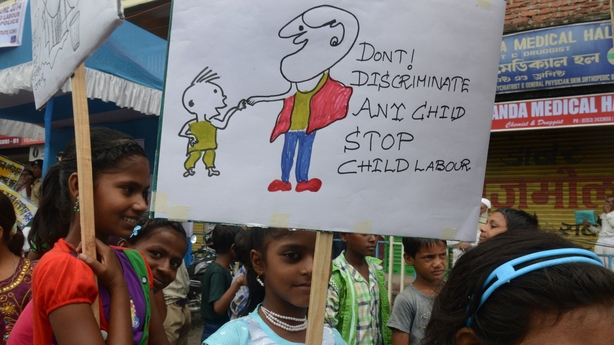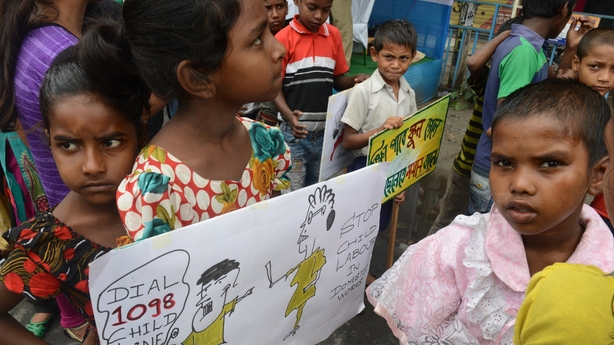Events are taking place around the world today to mark World Day against Child Labour.
They aim to raise awareness of the rates of child labour still present across the globe.
About 168 million children work worldwide, a figure which is down by a third since 2000, according to the International Labour Organisation.
The ILO and the World Organisation of the Scout Movement are among the groups holding events today.

Aid organisation CARE have reported that at least 50,000 Syrian refugee children in Lebanon are working.
They work 12 hours a day, often in dire conditions, to pay for food and shelter for their families.
More than one million Syrian refugees live in Lebanon, making up a quarter of the country’s population.
Many of these fled a civil war which has left 160,000 dead.
Only 50% of Syrian refugee children in the region attend school and only 30% in Lebanon, the organisation said.
Children working as street vendors say they are earning less than $5 a day.
Others work at coffee shops and markets or on farms and construction sites.
Some say they commute for hours on buses into the capital Beirut.
In Jordan, where nearly 600,000 Syrian refugees live, child labour has doubled nationwide to 60,000 since the start of the war.

CARE is giving cash to families in Jordan and Lebanon, which has banned refugee camps, to allow children to attend school rather than work.
The funds, however, are insufficient.
“The conditions are harsh and safety and security of the children is not guaranteed”, Johanna Mitscherlich, Regional Emergency Communications Co-Ordinator for CARE Jordan said.
Housing is inadequate and families struggle to get by on one or two meals a day, she added.
“There are also quite a few children who have injuries from the war or who are still traumatised and can therefore neither work nor go to school”, she added.

